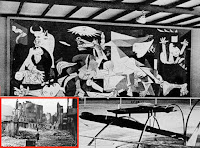Democratic Spain
DEMOCRATIC SPAIN (1975-2008):
It is the period of restoration of the democratic institutions and encompasses since the proclamation of Juan Carlos I as king and head of state in 1975 until the electoral victory of the PSOE in 1982.
 |
| Voters and electors in the elections to courts, as a percentage of the population and voters, respectively. |
Features:
- Controlled evolution, driven from within the system by the king and Suarez.
- Peaceful evolution consequence of the changes and maturity reached by the society in the years 70.
- Result of the consensus between some Francoist leaders and the opposition that suppressed the most radical aspects.
- Result of the ability of political personalities and the pressure of the masses desirous of substantial changes.
- It was favored by the international context.
There was a first president, Arias Navarro, but he failed and the king named Adolfo Suárez as the new president. With it, the transition from dictatorship to democracy began and in June 1977 the first popular democratic elections were held with the victory of UCD (Adolfo Suárez).
 |
| Tejero in the failed coup. |
After the resignation of Suárez, the elections give the victory to the PSOE ending the transition.
The Constitution of 1978 was created: which made possible the creation of the new democratic State and the design of the autonomic map.
1982-2008:
After the victory in 1982, the PSOE will be for more than a decade in power. Its programme included the consolidation of democracy, the development of the State of Autonomy, the culmination of the Spanish integration process in Europe and the creation of a welfare state.
All this was done by Felipe González, also during his tenure in Spain he joined the CEE and NATO and integration continued in Europe when in 1992 the EU was created and the EURO was established as a common currency. But the corruption scandals and the terrorism of ETA made the government discredited.
After a new election, it wins the PP of Aznar. During these years the economic bonanza accompanies Spain and finally we were able to enter the European Economic and monetary union and the euro came into circulation in 2002. Our economic growth surpassed that of the countries of the environment and the advances in the fight against terrorism were very significant. All this gave the victory back to the PP of Aznar that followed his mandate until 2004.
 |
| Newspaper cover showing the terrorist attack. |
On March 14th, 2004 elections were held for the ninth time after the transition, these elections were marked by the attacks of March 11 in the network of outskirts of Madrid, the biggest terrorist attack in the history of the country, giving the victory to the PSOE leads by José Luis Rodríguez Zapatero, a mandate that lasted until 2011, being very marked since 2008 by the biggest economic crisis in the country.




Comentarios
Publicar un comentario